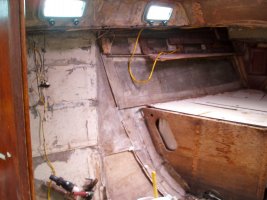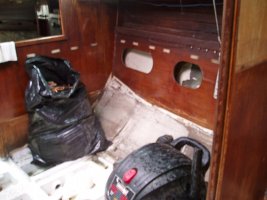upnorthfrank
Member II
I've got peeling/flaking paint on certain areas of the inside of the hull. There's also areas where there's no paint, the areas that you don't see behind & under stuff-
I want to remove all the flaking paint. Scraper works to a certain extent but it's not a surface that lends itself to this method, of course-
Will chemical stripper react w/ the hull resin?!? I'm thinking no, but I'll get some second opinions here before I jump in. Thoughts?!?
I thought of a heat gun too, but afraid of melting my boat. Thoughts?!?
Also, is it necessary, or does it help at all to paint the inside hull, in terms of preservation etc.?!?
Also also, I'm thinking of maybe fairing & painting the overhead, ceiling & other areas, instead of fabric w/ zippers, wood panelling etc. It's likely more work than trim & upholstery, but I'm also wondering if this would be enough of a weight saving measure to positively affect her performance?!?
Also also also, what's the best primer/paint combo out there?!?
I want to remove all the flaking paint. Scraper works to a certain extent but it's not a surface that lends itself to this method, of course-
Will chemical stripper react w/ the hull resin?!? I'm thinking no, but I'll get some second opinions here before I jump in. Thoughts?!?
I thought of a heat gun too, but afraid of melting my boat. Thoughts?!?
Also, is it necessary, or does it help at all to paint the inside hull, in terms of preservation etc.?!?
Also also, I'm thinking of maybe fairing & painting the overhead, ceiling & other areas, instead of fabric w/ zippers, wood panelling etc. It's likely more work than trim & upholstery, but I'm also wondering if this would be enough of a weight saving measure to positively affect her performance?!?
Also also also, what's the best primer/paint combo out there?!?



